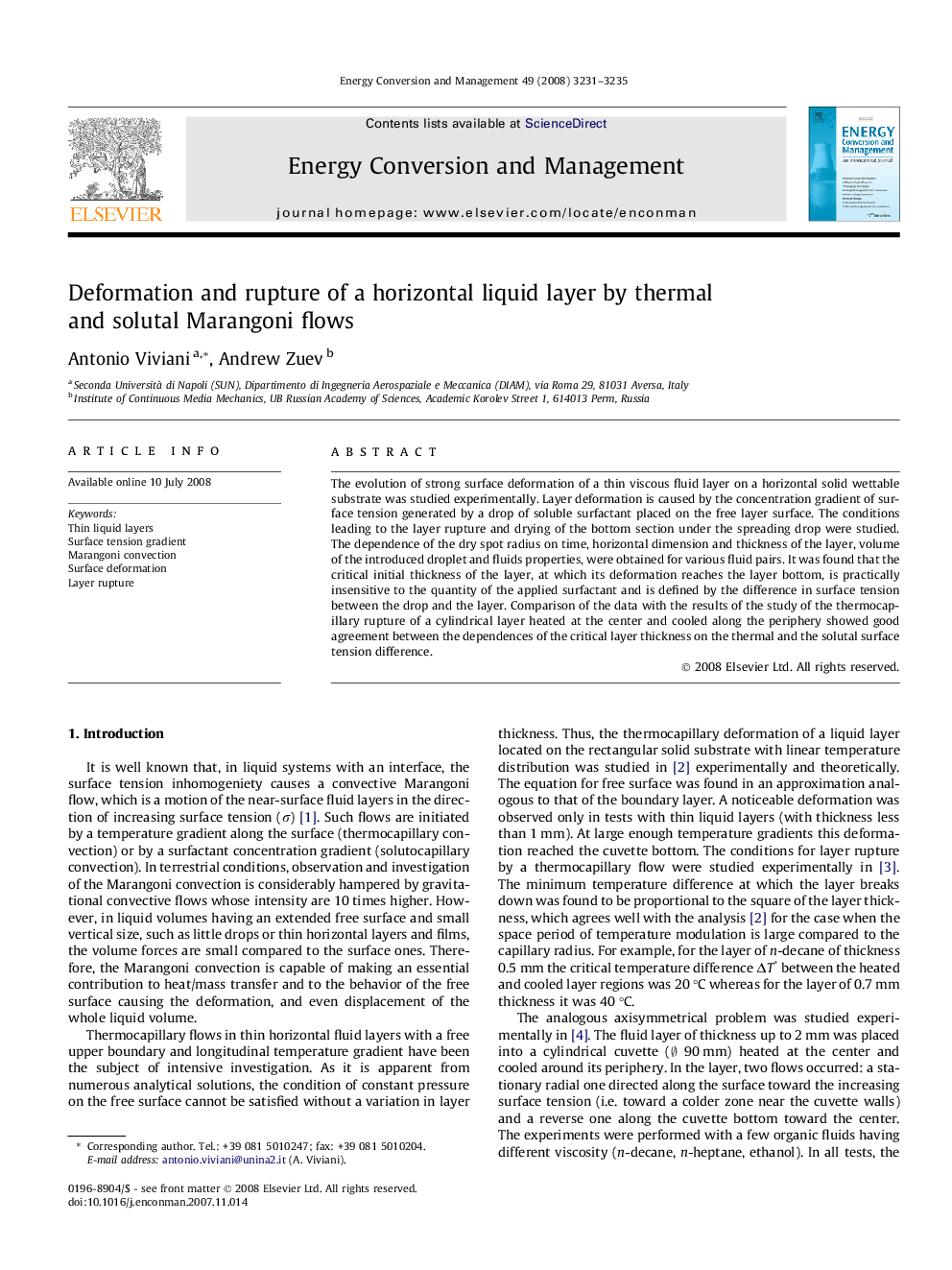| Article ID | Journal | Published Year | Pages | File Type |
|---|---|---|---|---|
| 766462 | Energy Conversion and Management | 2008 | 5 Pages |
The evolution of strong surface deformation of a thin viscous fluid layer on a horizontal solid wettable substrate was studied experimentally. Layer deformation is caused by the concentration gradient of surface tension generated by a drop of soluble surfactant placed on the free layer surface. The conditions leading to the layer rupture and drying of the bottom section under the spreading drop were studied. The dependence of the dry spot radius on time, horizontal dimension and thickness of the layer, volume of the introduced droplet and fluids properties, were obtained for various fluid pairs. It was found that the critical initial thickness of the layer, at which its deformation reaches the layer bottom, is practically insensitive to the quantity of the applied surfactant and is defined by the difference in surface tension between the drop and the layer. Comparison of the data with the results of the study of the thermocapillary rupture of a cylindrical layer heated at the center and cooled along the periphery showed good agreement between the dependences of the critical layer thickness on the thermal and the solutal surface tension difference.
